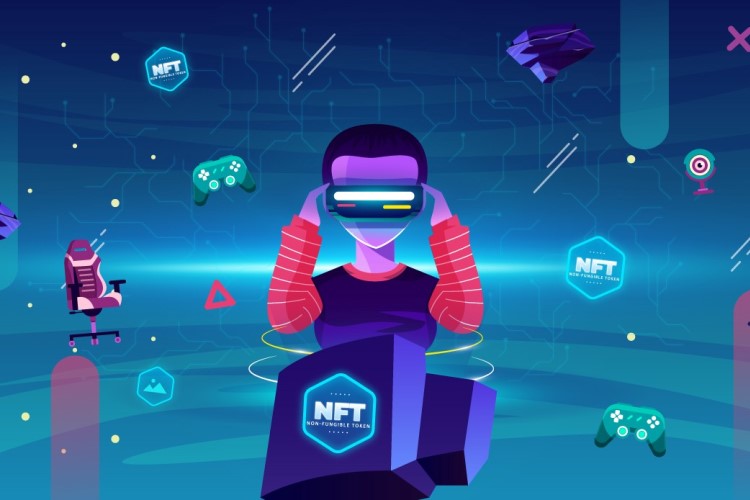Metaverse’s potential to unleash the next wave of digital disruption seems increasingly clear, with real-life benefits already emerging for early adopting users and companies. As in previous shifts in technology such as the emergence of the internet followed by social media, mobile, and cloud, novel strategies can quickly become table stakes.
The metaverse has the potential to impact everything from employee engagement to the customer experience, omnichannel sales and marketing, product innovation, and community building. Of course, many questions remain, including how virtual worlds will be balanced with the physical world to ensure the metaverse is built in a responsible manner.
Some countries, particularly in Asia, are moving forward rapidly. South Korea will be immersed in the metaverse sooner than later, as industries and public services begin rolling out virtual avatars and applications across the country. The two major retailers in the country have recently introduced metaverse and artificial intelligence elements to shoppers to enhance their shopping experience.
The metaverse is a virtual reality space in which users can interact with a computer-generated environment and other users.
Metaverse’s use cases
Albert Meige was giving a conference at the AI summit in June 2022. He exposed the following use cases, which seemed to me very clear to explain the use of metaverse according to the actors of the economy:
- Consumer metaverse: gaming, entertainment, events, social interaction,
- Enterprise metaverse: training and education, meetings, collaborative works,
- Industrial metaverse: design & development, simulation & optimization (digital twins), operational environment.
Metaverse’s building blocks
There continue to be questions around the longevity and potential of the metaverse, with an extreme view regarding it as merely a rebranded gaming platform of little wider interest (from Activeworlds in 1997, to Second Life in 2003 and now Roblox in 2022).
It may seamlessly combine our digital and physical lives by featuring a sense of immersion, real-time interactivity, user agency, interoperability across platforms and devices, the ability for thousands of people to interact simultaneously, and use cases spanning activities well beyond gaming. But the pace of its development will depend on multiple technological and user-experience factors, and is not limited to one platform, device, or even technology.
The metaverse’s technology has four core building blocks: content and experiences, platforms (such as game engines), infrastructure (e.g. blockchain) and hardware (including devices and networks), and enablers (such as payment mechanisms and security).
One primary question about the future evolution of the metaverse is the extent to which the interoperability of these elements can be advanced.
Metaverse’s investment flows
Large technology companies, venture capital (VC), private equity (PE), start-ups, and established brands are seeking to capitalize on the metaverse opportunity.
Corporations, VC, and PE have already invested more than $120 billion in the metaverse in the first five months of 2022, more than double the $57 billion invested in all of 2021, a large part of it is driven by Microsoft’s planned acquisition of Activision for $69 billion.
Large technology companies are the biggest investors — and to a much greater extent than they were for artificial intelligence (AI) at a similar stage in its evolution, for example. Industries currently leading metaverse adoption also plan to dedicate a significant share of their digital investment budgets to it.
Multiple factors are driving this investor enthusiasm, including ongoing technological advances across the infrastructure required to run the metaverse; demographic tailwinds; increasingly consumer-led brand marketing and engagement; and increasing marketplace readiness as users explore today’s early version of the metaverse largely driven by gaming (with some games boasting tens of millions of active players) with applications emerging that span socializing, fitness, commerce, virtual learning, and others.
Industries most likely to be impacted by the metaverse include consumer and retail, media and telecommunications, and healthcare, and those industries are also among those already undertaking metaverse initiatives.
According McKinsey, their view of consumer and enterprise use cases suggests it may generate up to $5 trillion in impact by 2030 — equivalent to the size of the world’s third-largest economy today, Japan. It is shaping up to be the biggest new growth opportunity for several industries in the coming decade, given its potential to enable new business models, products, and services, and act as an engagement channel for both business-to-consumer and business-to-business purposes.
Metaverse: how consider to capture value?
Companies already leveraging the metaverse may build lasting competitive advantages. They should develop a strategic stance by defining metaverse goals and the role they want to play; testing, learning, and adopting, monitoring results, and examining user behavior; and preparing to scale by identifying necessary capabilities and embedding the metaverse in their operating model.
The metaverse also poses urgent challenges that cut across firms, their employees, independent developers and content creators, governments, and, of course, consumers. Part of the workforce will need to be reskilled to take advantage of it rather than compete with it.
The metaverse also has obvious societal implications. A variety of stakeholders will need to define a road map toward an ethical, safe, and inclusive metaverse experience. Guidelines may also be necessary around issues including data privacy, security, ethics and regulatory compliance, physical health and safety, sustainability, and equity and fairness.






